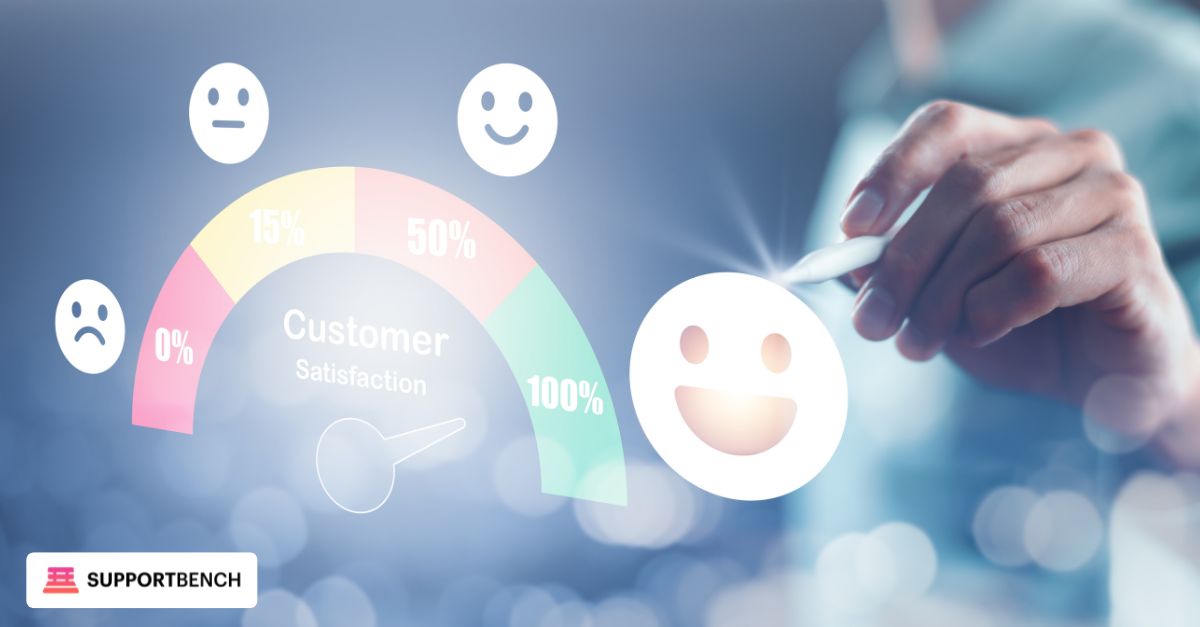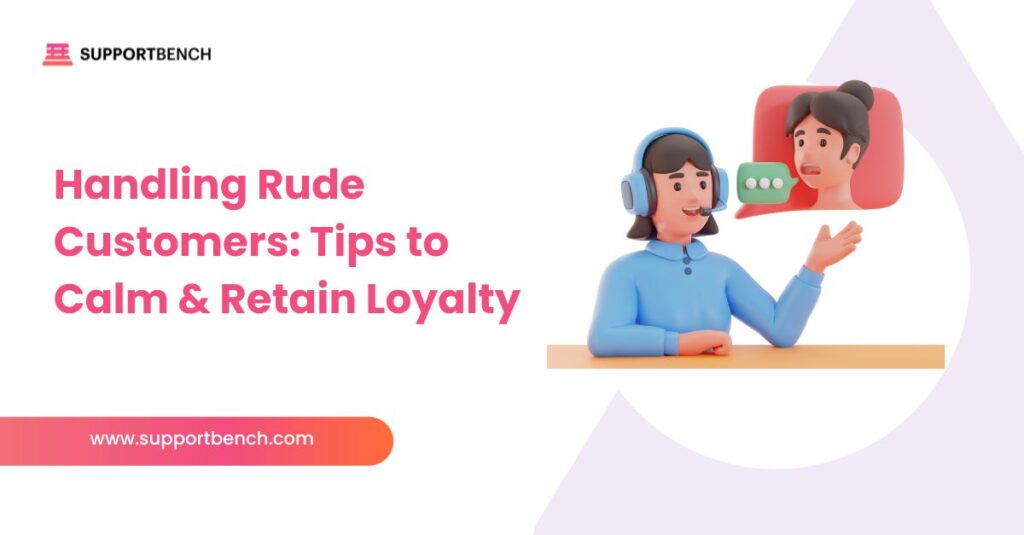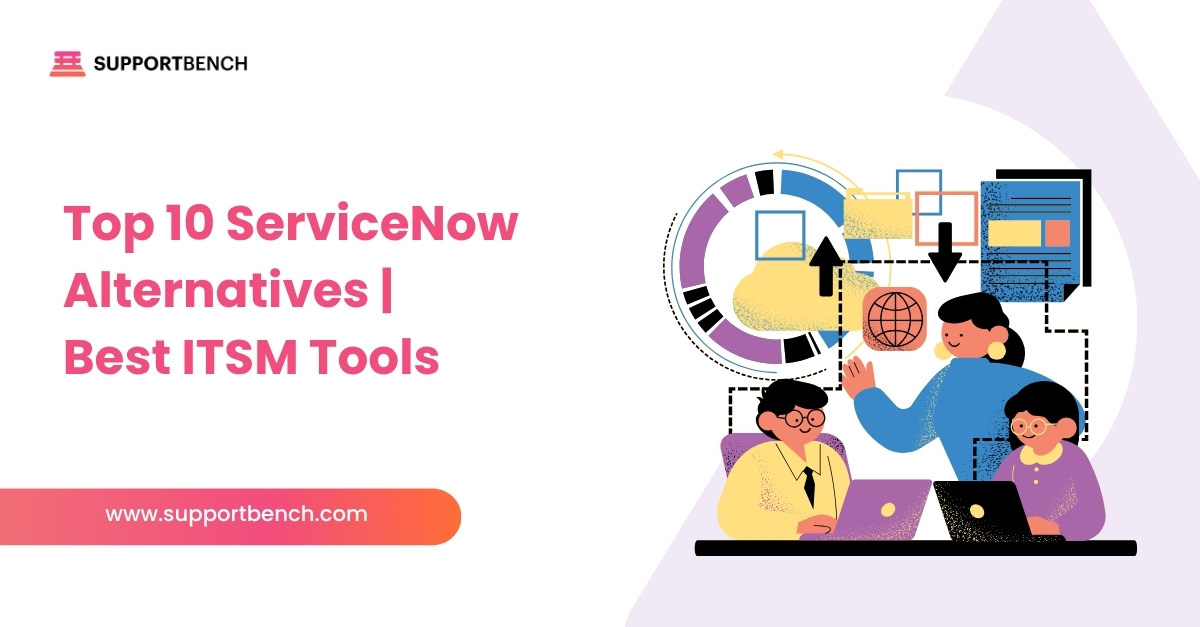Every business will face rude or angry customers at some point. The way your team responds determines not only whether the immediate problem gets resolved, but also whether that customer remains loyal or leaves with negative feelings.
Handling these situations with professionalism, empathy, and clear steps can transform moments of conflict into opportunities to strengthen relationships.
Understanding why customers behave rudely, recognizing the importance of handling anger effectively, and applying strategies to de-escalate difficult interactions are essential steps in protecting both customer relationships and brand reputation.
At a Glance:
Rude customers are often reacting to stress, unmet expectations, or poor communication. Stay calm, listen actively, show empathy, and set clear next steps. With professionalism and follow-up, you can turn frustration into loyalty and protect your brand’s reputation.
Why do customers behave rudely?
Customer rudeness is often rooted in stress, unmet expectations, or miscommunication. Understanding these triggers helps service teams approach situations with empathy rather than defensiveness.
Common causes of rude behaviour include:
- Unmet expectations: When a product or service doesn’t meet the promises made, frustration can quickly turn into rudeness.
- Poor communication: Delays, unclear responses, or a lack of updates often make customers feel ignored.
- Personal stress: Customers sometimes project outside frustrations into service interactions.
- Past negative experiences: Previous disappointments with your company or competitors can reduce patience.
- Perceived unfairness: If customers believe they are treated less fairly than others, anger often follows.
While some rudeness stems from emotional frustration (stress, personal issues), other cases arise from professional conflict, such as billing mistakes or service breakdowns
Why Handling Rude Customers Matters for Your Business
Handling rude customers is not just about calming tempers — it’s about protecting long-term loyalty, brand credibility, and measurable business outcomes.
Qualitative Impacts
- Customer Retention: A well-handled complaint can prevent churn and turn a negative encounter into repeat business.
- Reputation Management: Courteous conflict resolution reduces the risk of damaging online reviews or public complaints.
- Process Improvement: Even harsh feedback highlights gaps in workflows that can be fixed to prevent future issues.
- Brand Credibility: Companies known for fairness and professionalism earn stronger long-term trust.
Quantitative KPI Impacts

- NPS (Net Promoter Score): Customers who feel heard, even in conflict, are more likely to recommend your business.
- CSAT (Customer Satisfaction): Quick, empathetic resolutions lift immediate satisfaction ratings.
- Retention Rate: Professional handling of tense situations helps keep customers who might otherwise leave.
- Churn Reduction: Poorly managed rude interactions drive customers away, while effective handling lowers customer loss.
➤ Takeaway: Every difficult interaction is a chance to safeguard reputation and improve the metrics that drive business growth. Companies that approach rude customers with empathy and professionalism turn potential losses into loyalty.
How to Deal with Rude or Aggressive Customers
When emotions run high, service teams need practical steps to regain control of the conversation and protect the relationship. Here’s how:
Stay Calm and Professional
Responding emotionally escalates the situation. Keep a steady tone, neutral language, and avoid taking rudeness personally.
Listen Actively and Show Empathy
Let the customer explain their concern without interruption. Acknowledge their frustration with phrases like, “I can see this is frustrating for you.” Empathy shows you care, even if you can’t agree with every detail.
Clarify the Issue and Break It Down
Summarize what you’ve heard to confirm understanding, then split larger issues into smaller, solvable steps. This makes problems easier to address and reassures the customer you have a plan.
Offer Solutions and Set Clear Next Steps
Give the customer choices where possible, explain what will happen next, and provide a clear timeline. Options restore their sense of control, while clear steps prevent repeated complaints.
Know When to Escalate
If the situation becomes abusive or unmanageable, involve a supervisor or disengage professionally. Protecting your team’s well-being is just as important as helping the customer.
Poor vs. Effective Customer Service Responses
Comparing poor responses with effective ones helps service teams understand exactly how to de-escalate difficult interactions and keep customers loyal.
Situation | Poor Response | Effective Response |
| Late Delivery Complaint | “That’s not my fault. You’ll just have to wait.” | “I understand the delay is frustrating. I’ll arrange a replacement today and send you tracking details within 24 hours.” |
Customer Shouting on the Phone | “Calm down, or I can’t help you.” | “I can hear how upset you are. Let’s go through what happened step by step so I can fix this for you.” |
| Billing Error | “That’s how the system works. I can’t change it.” | “Thank you for pointing this out. Let me check your account and correct any errors immediately.” |
Unmet Service Expectations | “No one else has complained about this.” | “I see why this didn’t meet your expectations. Let’s look at options to adjust the service so it better suits your needs.” |
Shifting from defensive to empathetic responses doesn’t just resolve conflicts faster — it directly improves KPIs like CSAT and retention, which Supportbench helps track and optimize in real time.
What should you do after experiencing a rude customer?
The interaction doesn’t end when the customer leaves. Service professionals need to process the experience to improve future performance and protect their own well-being.
Reflect on the Interaction
Review what worked well and what could be done differently. Note details for future reference, especially if follow-up may be required.
Seek Feedback
Discuss the case in team meetings or with supervisors. Role-play similar situations to strengthen skills.
Get Support
Handling aggression can be emotionally draining. Take a short break, breathe, or debrief with a colleague. Support from teammates helps prevent burnout.
Post-Interaction Development: Training and Team Growth

Post-interaction development strengthens service skills, fosters resilience, and improves customer experiences.
Regular Training
Ongoing training, including realistic role-play scenarios, ensures teams are always prepared to manage challenging customer behaviour.
Practicing difficult conversations builds confidence, improves consistency, and strengthens an agent’s ability to de-escalate conflicts effectively.
Sharing Experiences
Encouraging agents to share tough cases in team meetings promotes learning and solidarity. Open discussion creates a supportive environment, helps identify best practices, and ensures staff don’t feel isolated when facing aggressive customers.
Continuous Improvement
Customer complaints should be treated as opportunities for growth. Analyzing recurring issues allows businesses to refine systems, reduce friction points, and create processes that prevent repeat problems while strengthening customer trust.
In Summary
Every business will face rude or angry customers, but the outcome depends on how your team responds. By staying calm, listening actively, showing empathy, and setting clear next steps, you can turn moments of frustration into opportunities for stronger relationships.
Investing in training, reflection, and continuous improvement helps your team grow more resilient while protecting your brand’s reputation. Ready to improve your customer support? Apply these strategies today to turn frustration into loyalty.
At Supportbench, we provide tools and training that help businesses build stronger customer relationships. Book a free demo now and see how your team can handle difficult customers with confidence.















